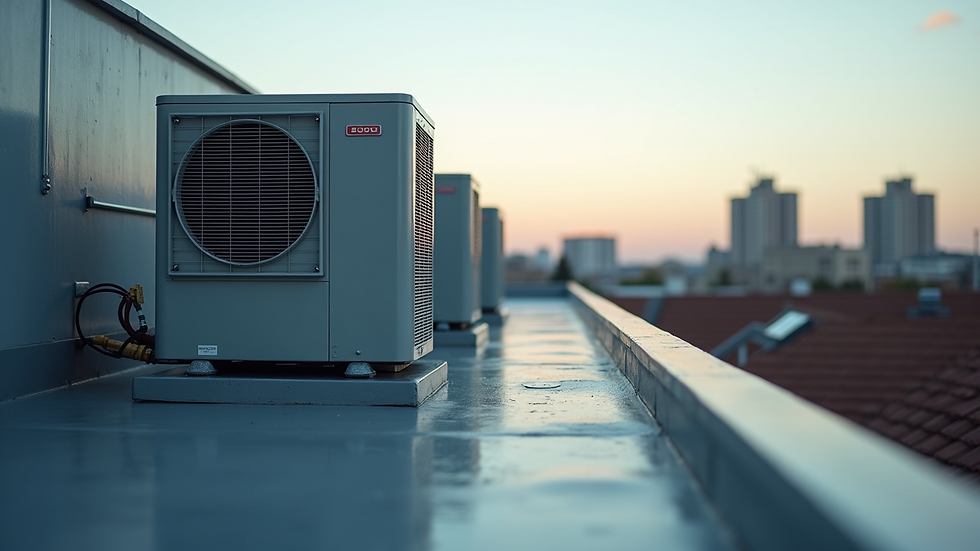Maintaining Your Tankless Water Heater for Longevity
- Kirill Anikin
- Aug 28
- 4 min read
Tankless water heaters are a popular choice for many homeowners due to their energy efficiency and endless hot water supply. However, like any appliance, they require regular care to ensure they operate efficiently and last for many years. Proper maintenance can prevent costly repairs and extend the life of your unit. This water heater upkeep guide will walk you through everything you need to know about maintaining your tankless water heater.
Why Regular Water Heater Upkeep Guide Matters
Regular upkeep of your tankless water heater is essential for several reasons. First, it helps maintain energy efficiency. Over time, mineral deposits and sediment can build up inside the unit, reducing its ability to heat water effectively. This buildup forces the heater to work harder, increasing energy consumption and utility bills.
Second, regular maintenance prevents unexpected breakdowns. A well-maintained heater is less likely to fail during peak usage times, such as cold winter mornings. This reliability is crucial for comfort and convenience.
Finally, proper upkeep extends the lifespan of your water heater. Tankless models can last up to 20 years or more with the right care, making them a smart long-term investment.

Essential Steps in Your Water Heater Upkeep Guide
Maintaining your tankless water heater involves several key steps that you can perform yourself or with professional help. Here’s a breakdown of the most important tasks:
1. Flushing the System Annually
Mineral deposits, especially calcium and lime, accumulate inside the heat exchanger. Flushing the system with a vinegar solution or a descaling agent once a year removes these deposits. This process restores heating efficiency and prevents damage.
How to flush your tankless water heater:
Turn off the power and water supply to the unit.
Connect a pump to circulate the vinegar or descaling solution through the heater.
Run the pump for about 45 minutes to an hour.
Flush the system with clean water to remove any remaining solution.
Turn the water and power back on.
If you’re unsure about this process, hiring a professional is a safe option.
2. Cleaning the Water Filter
Most tankless water heaters have a water filter to catch debris before it enters the system. This filter should be checked and cleaned every few months to prevent clogs that reduce water flow and pressure.
Steps to clean the filter:
Turn off the water supply.
Remove the filter screen.
Rinse it under running water to remove dirt and debris.
Reinstall the filter and turn the water back on.
3. Inspecting the Venting System
Proper venting is critical for safe operation. Check the vent pipes for blockages, corrosion, or damage. Ensure that the venting system is securely connected and free of obstructions like bird nests or debris.
4. Checking for Leaks and Corrosion
Regularly inspect the unit and surrounding pipes for any signs of leaks or corrosion. Early detection can prevent water damage and costly repairs.

What Maintenance Do Tankless Water Heaters Require?
Understanding the specific maintenance needs of your tankless water heater helps you keep it in top condition. Here are the main maintenance tasks to focus on:
Descaling and Flushing
As mentioned, descaling is crucial to remove mineral buildup. The frequency depends on your water hardness. In areas with hard water, you may need to flush the system twice a year.
Filter Cleaning
Filters should be cleaned every 3 to 6 months. If you notice reduced water flow or pressure, check the filter immediately.
Annual Professional Inspection
Even if you perform regular maintenance, an annual professional inspection is recommended. A technician can check electrical components, gas lines, and safety features to ensure everything is functioning correctly.
Monitoring Error Codes
Modern tankless water heaters often display error codes when something is wrong. Keep your user manual handy to interpret these codes and address issues promptly.
Checking the Pressure Relief Valve
The pressure relief valve prevents excessive pressure buildup. Test it annually by lifting the valve lever and letting it snap back. Water should flow freely when tested.

Tips for Extending the Life of Your Tankless Water Heater
Beyond regular maintenance, there are additional steps you can take to maximize your heater’s lifespan:
Use a Water Softener: If you live in an area with hard water, installing a water softener reduces mineral buildup inside the heater.
Maintain Proper Water Pressure: High water pressure can damage the unit. Use a pressure regulator if necessary.
Avoid Overloading the System: Don’t exceed the unit’s maximum flow rate by running too many hot water fixtures simultaneously.
Keep the Area Around the Heater Clean: Dust and debris can affect the unit’s performance. Keep the installation area clean and well-ventilated.
Schedule Regular Professional Maintenance: Even with DIY care, professional servicing ensures all components are checked and maintained properly.
For detailed guidance and professional services, consider exploring tankless water heater maintenance options available in your area.
Preparing for Seasonal Changes
Seasonal changes can affect your tankless water heater’s performance. Here’s how to prepare:
Winter: Cold weather increases demand for hot water. Ensure your heater is flushed and filters are clean before winter. Insulate exposed pipes to prevent freezing.
Summer: Lower demand means less strain on the unit. Use this time to perform thorough cleaning and inspections.
Spring and Fall: These are ideal times for professional inspections and maintenance to catch any issues before extreme temperatures arrive.
By aligning your maintenance schedule with seasonal changes, you can avoid surprises and keep your water heater running smoothly year-round.
Final Thoughts on Tankless Water Heater Care
Maintaining your tankless water heater is a straightforward process that pays off with reliable hot water and energy savings. By following this water heater upkeep guide, you can prevent common problems and extend the life of your unit. Remember to flush the system regularly, clean filters, inspect venting, and schedule professional checkups. With proper care, your tankless water heater will provide efficient and consistent hot water for many years to come.



Comments